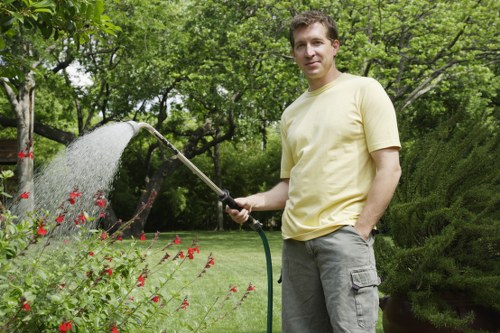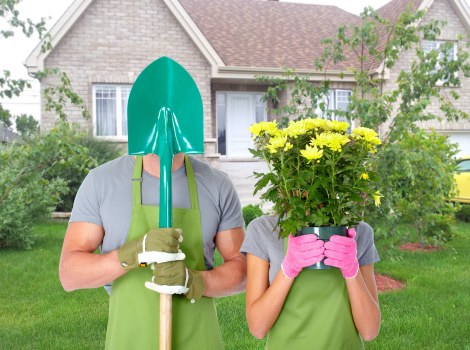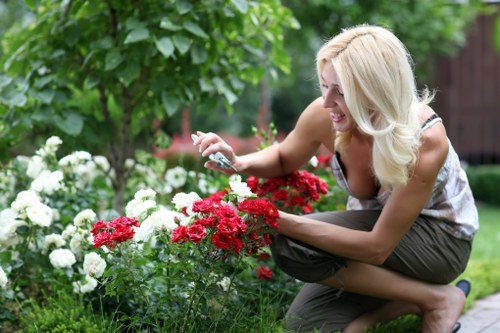Garden Fence Replacement Chinatown

Replacing a garden fence is a significant project that can greatly enhance the beauty and security of your home. In Chinatown, where residential spaces often blend traditional aesthetics with modern needs, finding the right garden fence replacement services is essential. Whether you’re looking to upgrade for better security, aesthetics, or functionality, understanding your options in Chinatown can help you make an informed decision.
Chinatown neighborhoods are known for their unique architectural styles and tight-knit communities. When considering a garden fence replacement, it’s important to choose materials and designs that complement the local environment. From classic wooden fences to modern metal designs, the right fence can add value and curb appeal to your property.
Before starting your garden fence replacement project, assess the current condition of your existing fence. Look for signs of wear and tear, such as rotting wood, rusted metal, or broken panels. Identifying these issues will help you determine whether a repair is feasible or if a full replacement is necessary.

Benefits of Garden Fence Replacement
Replacing your garden fence offers numerous benefits that go beyond just aesthetics. Here are some of the key advantages:
- Enhanced Security: A new fence can provide better protection against intruders and unwanted visitors.
- Increased Privacy: Modern fence designs can offer more privacy, allowing you to enjoy your garden without prying eyes.
- Improved Curb Appeal: A stylish fence can significantly boost the overall appearance of your property.
- Durability: New materials are often more durable and require less maintenance than older fences.
- Property Value: Upgrading your fence can increase the market value of your home.
These benefits make garden fence replacement a worthwhile investment for homeowners in Chinatown.
Additionally, a new fence can serve as a focal point in your garden, complementing plants, pathways, and other landscape features. Choosing the right color and style can tie together the overall design of your outdoor space.

Choosing the Right Materials
Selecting the appropriate materials for your garden fence is crucial for both functionality and aesthetics. Here are some popular options:
Wood
Wooden fences are a timeless choice, offering a natural and warm appearance. They are versatile and can be painted or stained to match your home’s exterior.
- Pine: Affordable and easy to work with, pine is a common choice for wooden fences.
- Cedar: Naturally resistant to moisture and pests, cedar is a durable and attractive option.
- Redwood: Known for its rich color and longevity, redwood is a premium material for garden fences.
Wood fences require regular maintenance to prevent rot and decay, especially in humid climates like Chinatown.
Metal
Metal fences, such as aluminum and wrought iron, offer a sleek and modern look. They are highly durable and require minimal maintenance.
- Aluminum: Lightweight and resistant to rust, aluminum fences are ideal for coastal Chinatown areas.
- Wrought Iron: Strong and ornate, wrought iron fences add elegance and security to your garden.
Metal fences are an excellent choice for homeowners seeking both style and strength.
Vinyl
Vinyl fences are a low-maintenance alternative to wood and metal. They are available in various colors and styles, and they resist fading, cracking, and warping.
- Easy to clean with just soap and water.
- Does not require painting or staining.
- Available in privacy, semi-private, and decorative styles.
Vinyl fences are perfect for those who want a beautiful fence without the hassle of upkeep.

Design Considerations
When planning your garden fence replacement, consider the following design elements to ensure your new fence meets your needs and complements your home:
Height and Length
The height and length of your fence will depend on your specific requirements, such as privacy, security, and local regulations. In Chinatown, certain areas may have zoning laws that dictate fence heights, so it’s important to check local guidelines before making a decision.
- Privacy: Taller fences provide more privacy by blocking views from neighbors and passersby.
- Security: Higher and sturdier fences can deter intruders and protect your property.
- Boundary: Clearly marking the boundary of your property can prevent disputes with neighbors.
Style and Color
The style and color of your fence should complement your home’s architecture and the surrounding landscape.
- Traditional: Classic designs, such as picket or panel fences, work well with traditional homes.
- Modern: Sleek lines and minimalist designs suit contemporary properties.
- Color: Choose colors that harmonize with your home’s exterior and garden elements.
Selecting a style that matches your neighborhood’s aesthetic can enhance the overall appeal of your property.

Finding the Right Contractor
Hiring a professional contractor is essential for a successful garden fence replacement project. Here are some tips to help you find the right contractor in Chinatown:
Experience and Expertise
Choose a contractor with extensive experience in garden fence replacement. Check their portfolio to see examples of previous work and ensure they have expertise in the materials and styles you prefer.
License and Insurance
Verify that the contractor is licensed and insured. This protects you in case of accidents or damages during the project.
References and Reviews
Ask for references from past clients and read online reviews to gauge the contractor’s reputation. Positive feedback and satisfied customers are indicators of reliable service.
Quotes and Estimates
Obtain multiple quotes to compare prices and services. Ensure that the estimates include all aspects of the project, such as materials, labor, and any additional costs.
Communication
Effective communication is key to a smooth project. Choose a contractor who listens to your needs and provides clear, timely updates throughout the replacement process.
Local Relevance: Nearby Areas to Chinatown
When considering garden fence replacement in Chinatown, it’s helpful to know the neighboring areas that share similar characteristics and offer additional services. Here are some of the closest areas to Chinatown:
- Little Italy: Just a short distance away, Little Italy offers a blend of traditional and modern fence designs, perfect for homeowners seeking a unique aesthetic.
- SoHo: Known for its artistic flair, SoHo provides creative fence solutions that can make your garden stand out.
- Financial District: For those in urban settings, the Financial District offers secure and stylish fencing options suitable for high-rise residences.
- Tribeca: Tribeca’s elegant neighborhood is ideal for high-end fence replacements that exude sophistication.
- Greenwich Village: With its charming streets, Greenwich Village offers fences that complement both historic and contemporary homes.
- Upper East Side: This affluent area provides premium fencing materials and expert installation services.
- Harlem: Harlem offers a variety of fencing options that cater to diverse architectural styles and budgets.
- Union Square: Union Square’s vibrant community ensures a wide range of fencing styles and materials to choose from.
- Midtown: In the bustling Midtown area, durable and low-maintenance fences are popular among busy homeowners.
- Battery Park: For waterfront properties, Battery Park offers fencing solutions that withstand harsh weather conditions.
Understanding the Unique Features
Each nearby area has its own unique features that influence fence styles and materials. For example, Little Italy’s traditional charm might inspire the use of ornate iron designs, while Midtown’s fast-paced environment may favor practical and durable materials like metal or vinyl.
Proximity and Accessibility
Proximity to Chinatown means that many contractors service multiple neighborhoods. This allows for a wider selection of styles and materials, ensuring that you find the perfect fence for your garden regardless of your specific location within Chinatown.
Additionally, understanding the specific needs and regulations of each nearby area can help you navigate local permitting processes and ensure your new fence complies with community standards.
Installation Process
The installation of a new garden fence involves several key steps to ensure a successful outcome:
Planning and Measurement
Begin by planning the layout of your fence. Measure the perimeter where the fence will be installed to determine the amount of materials needed. Consider any obstacles such as trees, walkways, or existing structures that may affect the installation process.
Permits and Regulations
Check with local authorities in Chinatown to see if you need any permits for your fence replacement. Adhering to zoning laws and community guidelines is essential to avoid legal issues and ensure your fence is compliant.
Foundation and Posts
The foundation and posts are critical for the stability of your fence. Ensure that posts are properly anchored in concrete to withstand weather conditions and provide long-term support.
Panel Installation
Once the posts are in place, install the fence panels. Depending on the material, this may involve screwing, nailing, or welding the panels to the posts. Ensure that panels are level and evenly spaced for a uniform appearance.
Finishing Touches
After the main structure is installed, add any finishing touches such as caps for the posts, gates, or decorative elements. These details can enhance the overall look and functionality of your fence.
Maintenance Tips
Proper maintenance can extend the life of your garden fence and keep it looking its best. Here are some maintenance tips for different fence materials:
Wooden Fences
- Regularly inspect for signs of rot, insect damage, or warping.
- Stain or paint the fence every few years to protect against moisture and UV damage.
- Clean the fence with a mixture of mild detergent and water to remove dirt and mildew.
Metal Fences
- Check for rust and treat any affected areas promptly to prevent further damage.
- Paint the fence periodically to maintain its appearance and protect against corrosion.
- Clean the fence with a soft brush and soapy water to remove debris.
Vinyl Fences
- Wash the fence with soap and water to keep it looking clean.
- Inspect for cracks or damage and replace panels as needed.
- Avoid using harsh chemicals or abrasive cleaners that can damage the vinyl surface.
Seasonal Maintenance
Performing seasonal maintenance can help address specific weather-related issues. For example, in Chinatown’s humid climate, it’s important to check for mold and mildew in the spring and prepare for heavy rains in the summer by ensuring proper drainage around the fence.
Professional Inspections
While regular DIY maintenance is important, having a professional inspect your fence periodically can identify potential problems early. Contractors can provide expert advice and perform repairs that go beyond basic upkeep.
Cost Considerations
The cost of garden fence replacement can vary widely based on several factors. Understanding these factors can help you budget appropriately for your project:
Material Costs
Different materials come with varying price points. Wood is generally more affordable, while metal and vinyl can be more expensive. Premium woods like cedar and redwood will also increase costs compared to pine.
Labor Costs
Labor costs depend on the complexity of the installation and the contractor’s rates. Custom designs and intricate patterns may require more time and expertise, increasing the overall cost.
Fence Height and Length
The height and length of your fence directly impact the amount of materials needed and the time required for installation. Taller and longer fences will naturally cost more.
Additional Features
Adding gates, decorative elements, or specialized hardware can add to the cost. While these features enhance functionality and aesthetics, it’s important to factor them into your budget.
Permits and Regulations
Obtaining necessary permits may involve additional fees. Ensure you account for these costs when planning your garden fence replacement.
Budgeting Tips
- Obtain multiple quotes from contractors to compare prices.
- Choose materials that balance cost with durability and aesthetics.
- Plan for unexpected expenses by setting aside a contingency fund.
- Consider phased projects if budget constraints are an issue.
Financing Options
If the cost is a concern, explore financing options such as home improvement loans or payment plans offered by contractors. Some suppliers also offer discounts or promotions that can help reduce expenses.
Environmental Considerations
When replacing your garden fence, it’s important to consider the environmental impact of your choices. Sustainable materials and eco-friendly practices can reduce your project’s footprint.
Sustainable Materials
- Bamboo: A renewable resource, bamboo is a sustainable alternative to traditional wood.
- Recycled Metal: Using recycled metal reduces waste and the need for new raw materials.
- Composite Materials: Made from recycled wood and plastic, composite fences are durable and environmentally friendly.
Eco-Friendly Practices
- Choose local materials to reduce transportation emissions.
- Opt for non-toxic stains and paints to minimize environmental impact.
- Implement proper waste disposal and recycling during the installation process.
By making environmentally conscious decisions, you contribute to the sustainability of your neighborhood and the planet.
Energy Efficiency
A well-installed fence can contribute to energy efficiency by providing shade and reducing wind exposure, which can lower heating and cooling costs for your home.
Longevity and Reusability
Choosing durable materials ensures that your fence will last longer, reducing the need for frequent replacements. Additionally, if you decide to move, a reusable fence can be relocated to another property, minimizing waste.
Legal and Community Guidelines
Before embarking on a garden fence replacement project in Chinatown, it’s essential to understand the legal and community guidelines that may affect your installation.
Zoning Laws
Local zoning laws dictate various aspects of fence installation, including height, materials, and placement. These regulations are designed to maintain the aesthetic and functional standards of the neighborhood.
- Height Restrictions: Many areas have limits on how tall your fence can be, especially near property lines or public spaces.
- Material Restrictions: Certain materials may be prohibited or restricted based on fire safety, environmental considerations, or community preferences.
- Setback Requirements: There may be rules about how far your fence must be from sidewalks, streets, or neighboring properties.
Homeowners’ Associations (HOAs)
If you live in a community governed by a Homeowners’ Association, additional guidelines may apply. HOAs often have strict rules about fence appearance, colors, and materials to ensure consistency across properties.
Permitting Process
Obtaining the necessary permits is a crucial step in the fence replacement process. Permits ensure that your project complies with local regulations and safety standards.
- Application: Submit an application detailing your fence plans, including dimensions and materials.
- Inspection: After installation, an inspector may visit to verify compliance.
- Fees: Permit fees vary based on location and project scope.
Neighbor Considerations
Communicate your fence replacement plans with neighbors to avoid disputes. Some regions require shared responsibility for boundary fences, so it’s important to clarify responsibilities and share costs where necessary.
Conclusion
Garden fence replacement in Chinatown offers homeowners a chance to enhance their property’s security, privacy, and aesthetic appeal. By carefully selecting materials, design, and a reliable contractor, you can achieve a beautiful and functional fence that meets your needs. Understanding local regulations and considering environmental factors will ensure a smooth and compliant installation process.
Whether you’re residing in the heart of Chinatown or one of its nearby areas, investing in a garden fence replacement is a valuable improvement that can increase your home’s value and your personal enjoyment of your outdoor space.
Frequently Asked Questions
1. How long does garden fence replacement take in Chinatown?
The duration of a garden fence replacement project in Chinatown depends on the size and complexity of the fence. On average, it can take anywhere from a few days to a couple of weeks.
2. What is the most durable fence material for Chinatown’s climate?
Metal fences, particularly aluminum and wrought iron, are highly durable and resistant to the humid climate of Chinatown. They require minimal maintenance and offer long-lasting performance.
3. Do I need a permit for garden fence replacement in Chinatown?
Yes, most garden fence replacement projects in Chinatown require a permit. It’s important to check with local authorities or your Homeowners’ Association to ensure compliance with all regulations.
4. Can I install a garden fence myself, or should I hire a professional?
While some DIY enthusiasts may choose to install a garden fence themselves, hiring a professional contractor ensures that the fence is properly installed, complies with local regulations, and reduces the risk of errors or damage.
5. What are the costs associated with garden fence replacement in Chinatown?
Costs vary based on materials, fence size, labor, and any additional features. On average, you can expect to spend between $20 to $50 per linear foot, including installation.